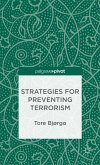Traditional "schools" of crime prevention, like the criminal justice model, social crime prevention or situational crime prevention, have proved to be too narrow and do not combine well with other approaches. However, each of these models provides important insights and contributions for reducing crime. By extracting the main preventive mechanisms of these diverse approaches, this book develops a more holistic, general model that consists of nine preventive mechanisms: building normative barriers to crime, reducing recruitment, deterrence, disruption, incapacitation, protecting vulnerable targets, reducing benefits of crime, reducing harm, and facilitating desistance.
The measures to activate the preventive mechanisms may differ according to the type of crime, as may the actors in charge of implementing the relevant measures. However, Tore Bjørgo demonstrates how his model of crime prevention can be effectively applied to diverse forms of crime, from domestic burglaries to criminal youth gangs and driving under the influence to organized crime and terrorism. In doing so, this important book will be of interest to scholars and students of policing, security studies and criminology, as well as practitioners and policy-makers.
The measures to activate the preventive mechanisms may differ according to the type of crime, as may the actors in charge of implementing the relevant measures. However, Tore Bjørgo demonstrates how his model of crime prevention can be effectively applied to diverse forms of crime, from domestic burglaries to criminal youth gangs and driving under the influence to organized crime and terrorism. In doing so, this important book will be of interest to scholars and students of policing, security studies and criminology, as well as practitioners and policy-makers.
"This book deserves to be widely read by both researchers and practitioners, especially in Anglophone countries. It is refreshing in its emphasis on the importance of theory as well as evidence. The stimulus for the approach used, many of the examples of preventive work described, and much of the research that is drawn on, come from Scandinavian countries and from Norway in particular." (Nick Tilley, Criminal Law and Criminal Justice Books, clcjbooks.rutgers.edu, January, 2017)
"It is a useful book, especially for all those looking for a general overview on crime prevention frameworks. In addition, the book offers a good tool for ordinary practitioners and decision-makers to implement diverse and complementary crime prevention measures and to not restrain to the more common ones. The model is simple and can help to think strategically in the frame of public policy to prevent crime." (Andrea Díaz Rozas, Oñati Socio-legal Series, Vol. 7 (6), 2017)
"It is a useful book, especially for all those looking for a general overview on crime prevention frameworks. In addition, the book offers a good tool for ordinary practitioners and decision-makers to implement diverse and complementary crime prevention measures and to not restrain to the more common ones. The model is simple and can help to think strategically in the frame of public policy to prevent crime." (Andrea Díaz Rozas, Oñati Socio-legal Series, Vol. 7 (6), 2017)








